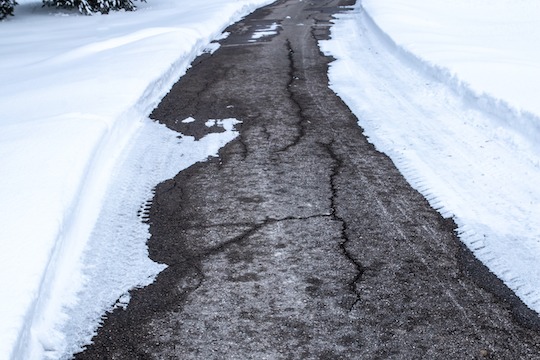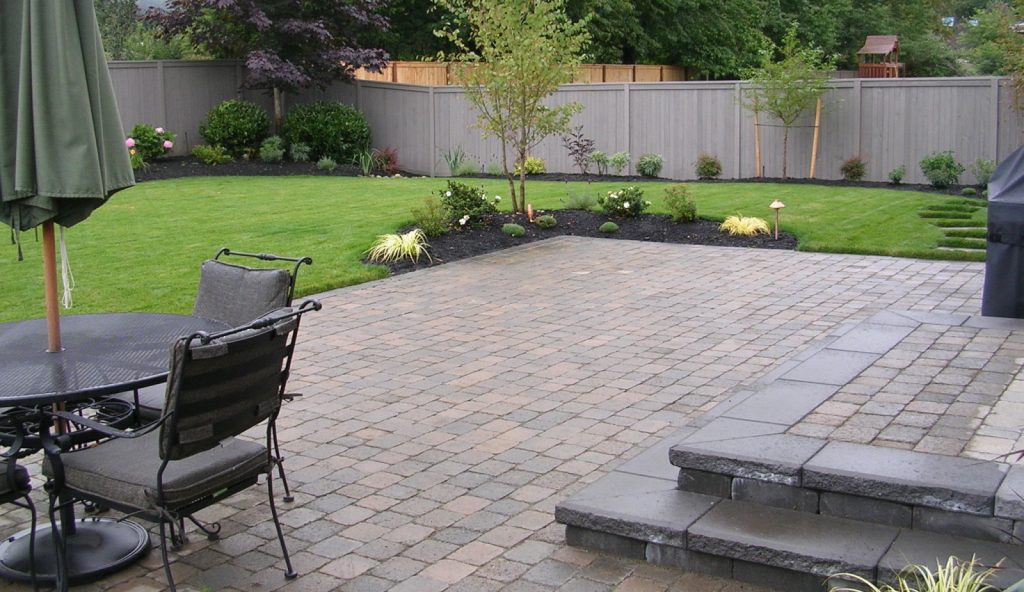The way that temperatures and moisture conspire to damage asphalt is only half the story. Very cold air, and summer sunshine, both hurt our roads too.
The matter of how the freeze-thaw cycles affect asphalt pavement is fairly well understood, sometimes even taught in grade school science classes: when liquid water enters cracks and then freezes, the expansion of water as it freezes pries apart those cracks. If temperatures fluctuate above and below 32ºF a few times, it’s a progressive process that ultimately leads to pavement failure and potholes.
But there’s more to the deterioration of asphalt-paved roads than just those cycles of warmer and colder. Moisture from snow and rain of course contribute to it. But cold has an additional effect, as does the nature of weather changing that is largely characteristic of climate change. These cycles and situations keep the local asphalt pavement company and concrete contractors busy.
First, the mere drop in temperatures, moisture present or not, has a contraction effect on the bitumen, which is the petrochemical “goop” that holds together the tiny stones and sand that make up the bulk of asphalt. As the bitumen contracts, it pulls the pavement apart; after sufficient time (and more so with lower temperatures), cracks in the overall pavement surface will develop. These cracks are the entry points for moisture that comes later and which then subjects it to the freeze-thaw phenomenon.
But what’s concerning to state and local departments of transportation is how the weather patterns are changing. Some cities hit record or near-record low temperatures during the polar vortex of 2021. They include Oklahoma City (-14ºF), Dallas (-2ºF), Houston (13ºF), San Antonio (12ºF), Little Rock (-1ºF), Fayetteville, Arkansas (-20ºF), and Hastings, Nebraska (-30ºF), among many more.
This is particularly bad for asphalt pavement that hasn’t been stressed by such cold temperatures before. In addition, there are higher levels of precipitation caused by global warming: with warmer temperatures globally, there is more water evaporation and therefore more moisture in the air. This moisture is what enters those pavement cracks.
And lest there be comfort among those who live and drive on asphalt roads in warmer, more temperate climes, it’s not like summer sunshine is kind to the pavement. The negative impact on asphalt from the sun is oxidation. This is when exposure of the pavement to sunlight, UV radiation in particular, in combination with automotive oils in the pavement, makes the asphalt more brittle. That leads to cracking (or as it’s sometimes called, spalling and raveling).
In all cases, in warmer and colder climates, smart preventative maintenance that addresses small fissures or cracks should be done before those cracks get bigger. This might be done with crack sealing, with overlays, and with filling potholes. The biggest challenge to that in colder, wintry weather is with permanent fixes that are relatively impossible to do before the temperatures warm up.


